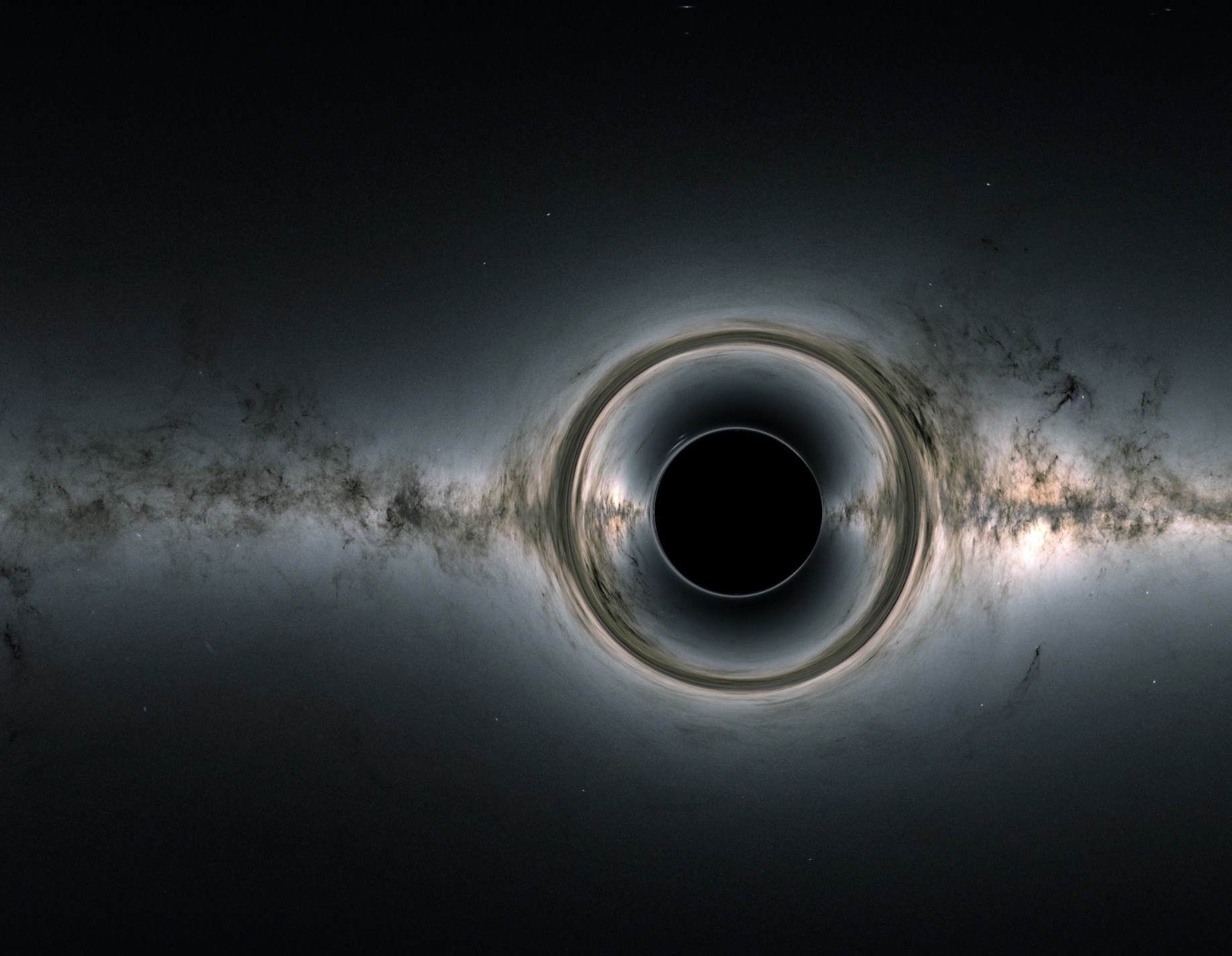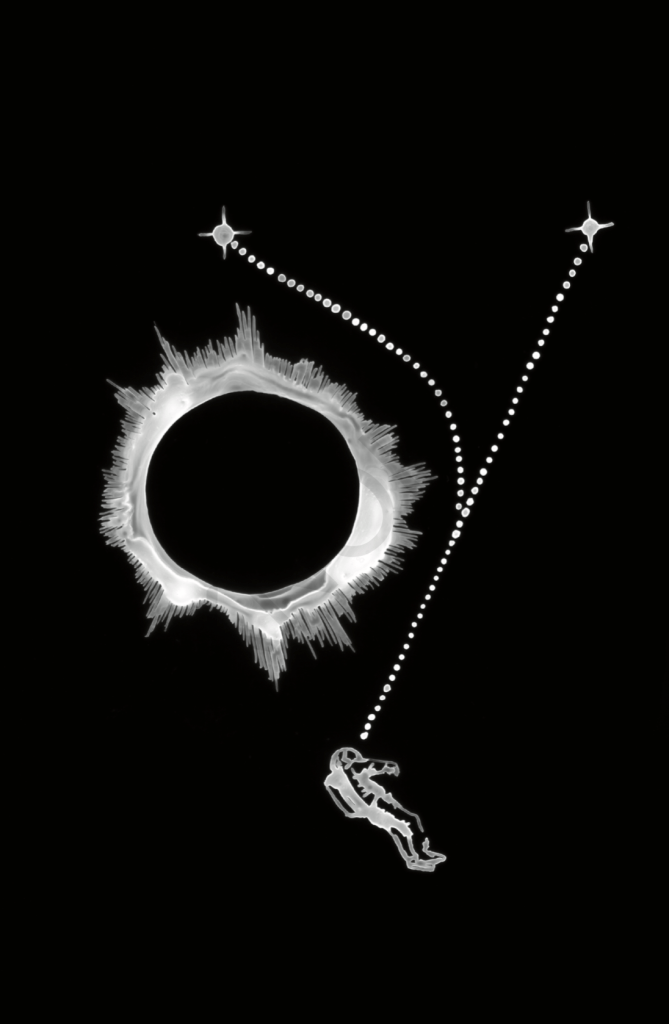Unveiling the Cosmic Abyss
Have you ever wondered what lies beyond the veil of the universe? Hidden in the depths of space, a mind-boggling phenomenon awaits: The Black Hole. Join me on a thrilling journey as we unravel the secrets of these enigmatic cosmic entities. Get ready for an adventure that defies the laws of physics and challenges the boundaries of our understanding.
Birth of Darkness: The Stellar Collapse
Let’s start at the beginning. Imagine a massive and awe-inspiring star reaching a critical point in its existence. This momentous event triggers an extraordinary chain reaction known as a supernova. As the star collapses upon itself, it leaves behind a dark void shrouded in mystery. This void is a black hole—an entity with a gravitational force so intense that not even light can escape its grasp.

The Chandrasekhar Limit: A Cosmic Threshold
But how does a star transform into this cosmic abyss? Enter the Chandrasekhar limit, a crucial concept in understanding black hole formation. In 1930, the brilliant astrophysicist Subrahmanyan Chandrasekhar proposed that any star surpassing 1.39 times the mass of our sun would inevitably collapse into a black hole. To put this into perspective, that’s equivalent to a staggering 2765 trillion trillion tons, or 2.765 x 1030 kilograms.
Stellar and Supermassive: Two Faces of Darkness
As the universe dances through its cosmic symphony, black holes take on different roles. Stellar black holes, formed from the remnants of dying stars, wander the galaxy, stealthily devouring everything in their path. On the other hand, supermassive black holes emerge at the very heart of galaxies, coexisting and evolving alongside their cosmic hosts since the galaxies’ inception.
Unveiling the Abyss: Components of a Black Hole
Now, let’s delve deeper into the abyss and examine the components that define a black hole’s existence. The Event Horizon: Beyond the Point of No Return Imagine an invisible boundary, a cosmic Rubicon that marks the point of no return. This boundary, known as the event horizon, serves as the black hole’s threshold. Once an object crosses this threshold, escape becomes impossible. The escape velocity surpasses even the speed of light, trapping all matter within its gravitational embrace. The Singularity: Where Physics Ceases to Exist. Venture further into the heart of a black hole, and you’ll encounter the singularity—a one-dimensional point within the fabric of space-time. Here, gravity becomes infinitely intense, warping the laws of physics beyond comprehension. At the singularity, the very essence of reality disintegrates, leaving us in awe of the mysteries that lie within.

The Elusive Shadows: Unmasking Black Holes
Detecting the presence of a black hole proves a formidable challenge, even for the most advanced equipment. Yet, there are tantalizing ways to catch a glimpse of these cosmic enigmas. The Curvature of Light: Light, as it travels through the cosmos, follows a path dictated by gravity. Albert Einstein’s theory of general relativity predicted this curvature, a concept that forever changed our understanding of the universe. In 1919, during a total solar eclipse, Arthur Eddington and his team provided groundbreaking evidence for this theory. By observing the bending of light from the Hyades star cluster as it passed close to the sun, they confirmed Einstein’s predictions and thrust the theory of relativity into the scientific spotlight.
The Abyss Beckons: Approaching the Event Horizon
As we approach the edge of a black hole, a cosmic ballet of light and darkness unfolds. Here, the laws of physics conspire to challenge our intuition and bend the boundaries of possibility. The Perilous Journey: Imagine hovering just outside the event horizon, a precarious position between existence and oblivion. If you could shine a light on your face in this treacherous place, you would be astounded to witness your own back, as light bends around the black hole, taking a circular orbit. However, beware, for the closer you come to the black hole’s event horizon, the faster you must accelerate to resist its relentless pull. Spaghettification: A Gruesome Fate- Enter the event horizon, and your fate is sealed. The forces at play within a black hole give rise to a terrifying phenomenon known as spaghettification. As gravity stretches your body into an elongated shape, much like strands of spaghetti, you would succumb to a grisly demise. Torn apart at an atomic level, the consequences of this cosmic encounter would be nothing short of horrifying.
Darkness Beckons: The Final Journey
The Descent into Oblivion: A Journey without Return: If you find yourself hurtling toward the dark abyss, know this: once you cross the event horizon, there is no turning back. Beyond this point, the rules of the universe are forever altered, and any transmission or signal from within the black hole will be lost to eternity. You will venture into a realm where nothing escapes, lost in the annals of cosmic history.

The Ultimate Enigma
Black holes, these cosmic behemoths, continue to captivate and mystify us. They hold secrets that challenge our very understanding of the universe. As we strive to unlock their mysteries, we must also remember the awe-inspiring dangers they present. To encounter a black hole unawares is to face the epitome of darkness, where even light ceases to exist. So, should you ever find yourself confronted by the immense shadow of a black hole, take heed. Respect its power, maintain a safe distance, and marvel at the immense forces that shape our universe. For to cross that threshold is to surrender to the whims of a cosmic abyss, a place where existence and the laws of nature vanish into the infinite void.
